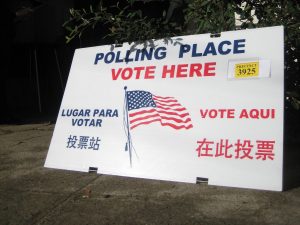At One Nation Every Vote (OneV), we believe understanding our voting history is critical to protecting and expanding democracy today. In this ongoing series, we’re counting down OneV’s Top 20 Moments in American Voting History—moments that helped expand the right to vote and bring us closer to the promise of a truly representative democracy.
This week, we turn to moment #10: The McCarran-Walter Act of 1952, also known as the Immigration and Nationality Act of 1952—a little-known but powerful shift that opened the doors to citizenship, and with it, the right to vote, for millions of immigrants previously excluded based on race.
Breaking the Racial Barrier to Naturalization
For much of American history, naturalization—the process through which immigrants become U.S. citizens and gain the right to vote—was tightly restricted. Beginning in 1790, U.S. naturalization law limited citizenship to “free white persons.” Later, it was expanded to include people of African descent, but other racial and ethnic groups, particularly from Asia, remained excluded for decades.
This racial restriction was enforced through immigration policies and reinforced by Supreme Court decisions. Asian immigrants, even after living in the U.S. for decades, were legally prohibited from becoming citizens. Consequently, they were also denied access to voting, owning property, and fully participating in civic life.
What Changed in 1952?
In the aftermath of World War II and amid growing pressure to address racist policies, Congress passed the McCarran-Walter Act. While the law maintained quotas that favored European immigration, it eliminated race as a barrier to naturalization for the first time in U.S. history.
This meant that immigrants from Japan, China, Korea, India, and other parts of Asia were finally eligible to become American citizens—and thereby secure the right to vote.
Though not a perfect or fully inclusive piece of legislation, the McCarran-Walter Act marked a critical turning point. It dismantled a longstanding system of racial exclusion and took an important step toward a more inclusive democracy.
The Impact: A Broader Electorate and a Deeper Democracy
The passage of the McCarran-Walter Act didn’t just open a legal pathway for Asian immigrants to vote—it helped redefine who could be considered fully American.
In the decades that followed, many Asian immigrants naturalized, voted in elections, ran for office, and became leaders in their communities. This change also laid the groundwork for future immigration reforms, including the Immigration and Nationality Act of 1965, which abolished national origin quotas entirely.
By removing racial language from citizenship law, the U.S. took a step forward in aligning its policies with its democratic ideals. The McCarran-Walter Act helped move the country closer to a more inclusive vision of citizenship—one based on commitment to democratic values, not race or ethnicity.
Stay Tuned: Moment #9 Coming Next Week
The McCarran-Walter Act reminds us that voting rights are deeply connected to broader questions of inclusion and equality. Removing racial barriers to naturalization was a milestone on the long road toward universal suffrage in America.
Next week, we’ll reveal Moment #9 in our countdown—another major step in expanding the right to vote in the United States.
Help Us Keep Democracy Moving Forward
At One Nation Every Vote (OneV), we’re committed to telling the stories that matter—nonpartisan stories about American democracy that educate, inspire, and activate citizens to participate in elections at every level of government.
If you believe in this mission and want to help us expand voter participation across the country, please consider supporting our work.
Together, we can ensure that every American voice is heard—and every vote counts.


Leave a Reply